An artistic laboratory of what we leave behind
Interview with artist Troels Sandegård
Humidity, microorganisms, sweat, and dust are but some of the elements in artist Troels Sandegård’s observations of how reality influence him and the way he participates in it. His laboratory practice never focuses on a temporary thematic subject; it is more of a continuous evolution of the same basic observations of reality. A reality in which he is both an observant analyst and the driven protagonist.
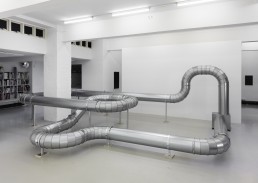
When did you first start making art and what motivated you to become an artist?
It all started when I, as a 19 year old, travelled to Pietrasanta, Italy. While I was there, I had the chance to work with the classic art of sculpture, and the slow process was challenging and appealing to me. During my stay, which were about six months, my interest for art, especially sculpturing, grew, which motivated me to send an application to Kunstakadamiet (academy of art) in Copenhagen, and after a couple of failed attempts, I was accepted.
Your artistic practice often revolves around the examination of physical processes in our environment. What kind of stories do you seek to tell with your works?
My works often stem from observations of how reality influence me and how I participate in it. I often see my works as a kind of scale, which quite literally relates to this question. The works are spatial installations or sculptures, which imitate or represent psychical phenomena in real life. By isolating the phenomena from their original body/environment, something that is almost invisible or unnoticed can become something visible and concrete. For example, I have been very interested in what the air in a specific room contains in regard to humidity, microorganisms, and dust, and also how the human body adds humidity and heats its surroundings. I could visualise what a body secretes or leaves behind (such as sweat, breath, or temperature) in its surroundings, or how a specific room’s humidity, or microorganism or dust loading can manifest in new ways. By doing this, a new experience arises, where the body’s normal hierarchy changes, and the psychical phenomena reaches a universal character.
For me, it is interesting to isolate a phenomenon or a process that is connected with my presence as a body and a human, as an independent character and collection of material. It gives me an opportunity so create brand new connections and metaphoric references, to see my own body as a cube, for example, with an identical surface area and temperature, as in the work SELF-PORTRAIT, NAKED, or in the work, SELF-PORTRAIT, RESPIRATION AND PERSIRATION, where I vaporize a liquid containing minerals to show the different minerals that are contained in the sweat that is settled in a crystalline landscape.
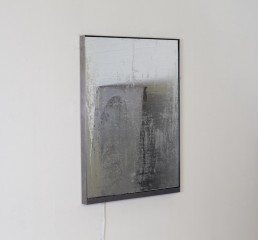
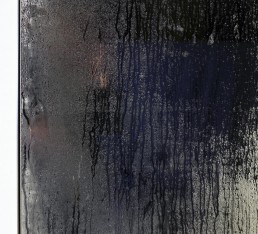
The exploration of materiality has a profound effect on your works. What are your criteria when choosing the materials for your works?
When I am selecting material for a work, there is always a process of elimination, because my ideas always have very concrete and physical limitations, which more or less defines the final expression. However, what is essential to me is that the conceptual idea of the work needs to merge with the material’s spatial and physical character, so that the two different elements (the idea and the material) in co-operation creates an interesting synergy that creates a third element, which is the work. My works often have a great aesthetic value that holds a clear intention, but you might experience these as a riddle before you discover the conceptual considerations the works contain.
Due to your use of materials from the natural surroundings such as dust, sweat, and microorganisms, your artworks possess a processual character even long after you have finished working with them. Do you ever regard an artwork as being ‘finished’?
Some of my works register, collect, or translate different processes in physical installations where the process is underway during the exhibition period. Others have different processes that have ended and are only captured afterwards, but both types are ‘done’ though one is still evolving and the other has ended its process. The works often have a clear relation to time, and how a moment is experienced. This always relates to a movement or a movement at standstill in time. The moment, to me, is an extract of a continuous movement towards something new that cannot be repeated and because of this, our presence in any given moment has a major significance for the next.
Process is a keyword in your practice. Where does the artistic process begin for you?
A new idea often begins with an observation of a phenomenon or something I read. After this, it might be hidden away in a drawer until it has gathered enough inspiration, so that I can get started with researching how I want to express it. During this time, where I try to decide and figure out how this idea can take form, I research intensely different material’s physical qualities, characteristics, and limitations. I often view my works as materials, and when I see an idea finding the right physical character, it is done. To me, something interesting happens when a material’s characteristic can define a function. A ship is not a ship before it is in water, and a table is not a table before it has legs. In the same way, my works are not complete before the functionality of the material defines the character of the idea. The close relation between the evolution of the physical and visual character of a work has always been the biggest inspiration for me. Because of this, I am always in the middle of creating new thoughts in different arrangements in my laboratory/studio.
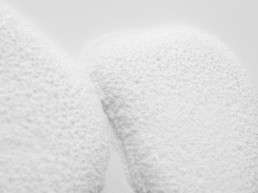
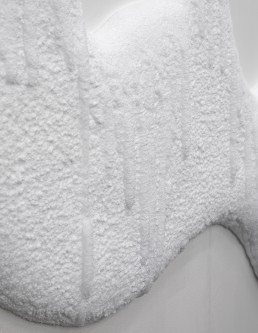
The world is becoming more and more digital, which is also reflected in the art world with the development of artworks within the realm of digitalization and virtual reality technology. On the contrary, your artworks seem to be very much related to the physical space and the human perception of it. Do you think that your artistic approach – consciously or unconsciously – is a counter-reaction to a world that puts us at risk of growing more detached from our physical bodies?
There is no doubt that many of my works have a strong visual character and often require a physical interaction, but it has never been a conscious counter-reaction to a progressively more digital foundation of experience. It is more of a necessary satisfaction in the evolution of the works.
Can you tell a bit about your current exhibition in the Asbæk Lounge at Martin Asbæk Gallery in Copenhagen?
At the exhibition at The Asbæk Lounge, I show three different works. One of these is from a series I call SELFPORTRAIT, RESPIRATION AND PERSPIRATION, which is created by letting a liquid drip slowly unto a metal plate. The liquid is produced in a biochemical laboratory; created from an analysis of my own sweat. The interval between the drops is identical with my own body’s continuous respiration and perspiration. The liquid evaporates which makes the minerals in the liquid settle like a crystalline landscape. I have worked on this piece for a couple of years and have been fascinated by how a so simple installation, which remains unchanged, can create such a wide variety of patterns, which vary in form and expression from time to time. It also fascinates me how the different metal’s interaction with the minerals in the liquid can create such a variety in colour. I show seven different pictures in that series in varying size.
Meanwhile, I present four sculptures from a series called INSPIRATIONS 15 MIN, which is ten cubes in brass that relate to my breath. I have been interested in the function of the lungs as a part of the body’s necessary interaction with its surroundings – taking in oxygen to oxygenate the blood and deliver carbon dioxide. To isolate that function, I have measured the amount of air which I need to breath for fifteen minutes and transformed the volume into a square cube made of think brass plates.
The work’s complete series consists of ten individual cubes, which I, with a vacuum pump, has sucked the air out of, in ten different stages. The reason I chose metal to represent my lung-capacity, is that I want to emphasize the absence of the cubes total volume in each of the stages. Where a standstill of a motion from the stage of a complete cube in some way is visible whilst the deformed stage is visible. The cubes are polished and sucks in the light, like the air that is sucked out of the cube.
Then, I present a photographic work, which consists of four photos of glass plates with a landscape created from microscopic fungi. The glass plates are from a work I made for an exhibition at Esbjerg Kunstmuseum in 2009, where I placed a greenhouse in the exhibition space. On the glass plates I applied agar (which is a sterile growth product), after which the glass plates were exposed to air in the exhibition space for 45 minutes, after which the fungi slowly started to grow on the agar. After the exhibition was finished, I took photographs of the overgrown glass plates.
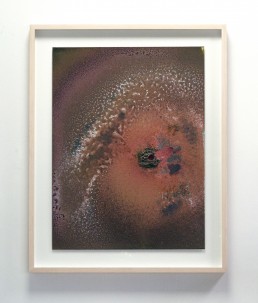
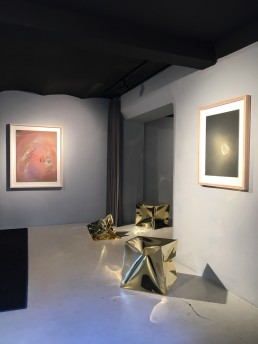
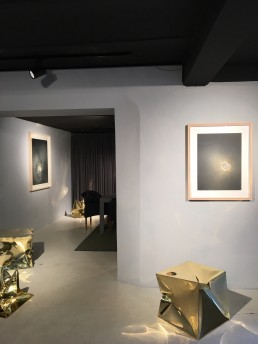
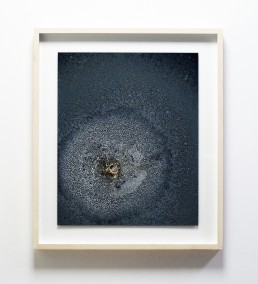
What are you currently interested in and how does it feed into your creative process?
My interest is never a temporary thematic subject; it is more of a continuous evolution of the same basic observations of reality. Earlier works are often in a sort of interpretative process, which makes it so that I stay processing them again and again, as if it were a sourdough made of thoughts that need continuous feeding.
The biggest thing for me right now is actually a living sourdough, which fits right into my conceptual perseverance in interest and evolution of biological processes, and then it makes for a damn good bread. 🙂
Who, or what, has been the biggest influence on your work to date?
Bruce Naumann and Robert Smithsson
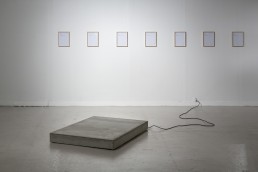
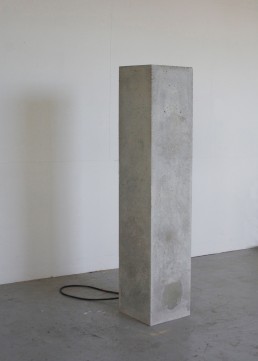
CV
Karl Troels Sandegård
troelssandegaard.com
1979 in Copenhagen, Denmark
Lives and works in Copenhagen and Berlin
—
Education
2000-2007 The Royal Danish Academy Of Fine Arts, Copenhagen, DK
—
Collaborations
The institut of bioinformation (est. 2012) – w. Ebbe Stub Wittrup
OEEN Group (est. 2007) – w. Kristoffer Akselbo, Jacop Jessen and Niels Henriksen
—
Selected solo exhibitions
2014 Bodies And Bodies, Overgaden Institut Of Contemporary Art, Copenhagen, DK
2011 A parallel myth of the death of the Greek giant Typhoon and other interpretations of Vortex, Gallery Christina Wilson, Copenhagen, DK
2010 The massive void, Esbjerg Kunstmuseum, DK
—
Selected group exhibitions
2016 Af-sloeret, KH7Artspace, Århus, DK
2016 On the Immense and the Numberless, David Risley Gallery, DK
2016 Spring Exhibition, Den Frie, DK
2015 Little Berlin, Philadelphia, USA
2015 Flux Factory, NYC, USA
2015 Spring Exhibition, Den Frie, DK
—
Selected bibliography
New Danish Art 2012 Kopenhagen Publishing, Copenhagen.
The Massive Void. Troels Sandegård, Revolver Publishing by Vice Versa, Berlin, 2010.
The traces. Troels Sandegård, Revolver Publishing by Vice Versa, Berlin, 2008.
Ny Dansk Kunst 05/06, Kopenhagen Publishing, Copenhagen. 2006. pp. 160-161